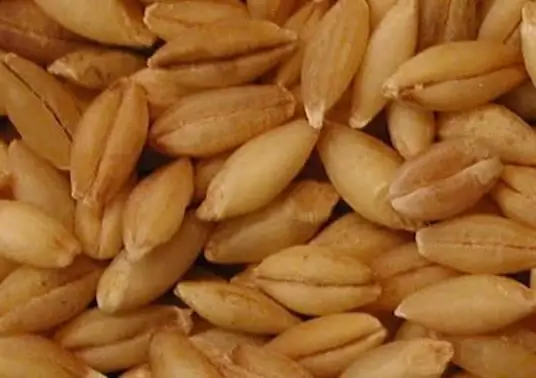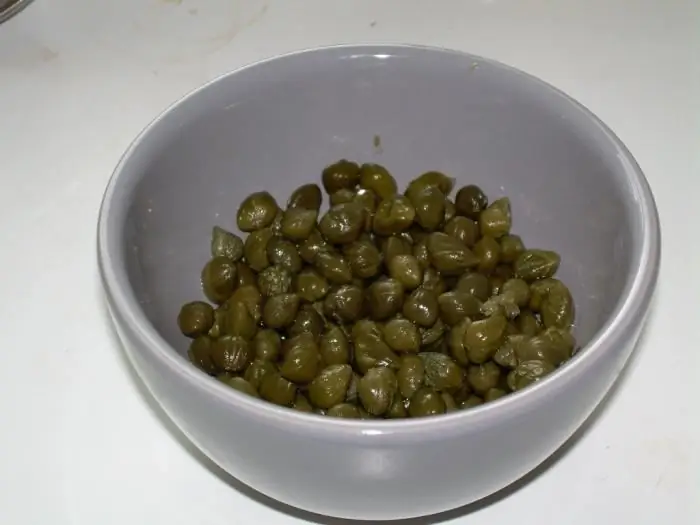2026 Author: Isabella Gilson | [email protected]. Last modified: 2025-01-23 12:50:34
What are almonds? How is it used? You will find answers to these and other questions regarding the mentioned product in this article.

Basic information
What are almonds? An almond is a small tree or shrub that belongs to the subgenus Almond and the genus Plum.
Many people believe that almonds are just nuts. But in fact, it is just a stone fruit, which in its shape is very similar to an apricot drupe.
Botanical description
What is an almond and what does it look like? It is a shrub or a small, highly branched tree 4-6 meters high. The shoots of such a plant are of 2 types: generative shortened and vegetative elongated.
Almond leaves are lanceolate, petiolate and with a long pointed tip. As for the flowers, they are solitary, with light pink or white petals, one pistil and numerous stamens. In diameter, they reach 2.5 cm, and also consist of a red or pink corolla and a joint-leaved goblet calyx. The flowers of this plant bloom much earlier than the leaves.
Do almonds bear fruit? The nut that we are used to seeing on store shelves is called almond. It is obtained from the fruits of the consideredplants that are dry, velvety-pubescent and oval single-stone with a leathery green inedible and fleshy pericarp.

When ripe, the dry pericarp separates quite easily from the stone. At the same time, almond nuts have the same shape as the fruits themselves. They are covered with small dimples, and also have a groove, a mass of 1-5 g and a length of 2.5-3.5 cm.
Growth
Now you know what an almond is. The primary focus of the formation of this plant is located in Western Asia, as well as in nearby regions, including Central Asia and the Mediterranean. Almonds have been growing in these areas for many centuries BC. Today, the largest plantations of this shrub are in China, the Mediterranean region, Central Asia, the USA (in particular in the state of California), in the Crimea, Kopetdag, the Caucasus and the Western Tien Shan.
This tree is also grown in the warm regions of Slovakia (in vineyards), the Czech Republic and South Moravia.
Almond grows on gravel and rocky slopes at an altitude of 800-1600 meters above sea level. It prefers soils rich in calcium. It can be found in small groups of 3 or 4 individuals, at a distance of 6-7 meters from each other.
The plant in question is very photophilous and drought-resistant, as it has a well-developed root system.

Almond blossoms (the photo of the shrub is presented in this article) in March or April, and sometimes even in February. Its fruits ripen in summer, in June-July. He startsbear fruit from 4-5 years and for 5 centuries. Almond lives up to 130 years.
Reproduction of this tree occurs by stump shoots, seeds or root offspring. It tolerates severe frosts, but with the beginning of the growing season, it suffers quite seriously from even minor spring frosts.
Chemical composition
The taste of almonds, or rather its nuts, is known to many. The kernels of the fruits of this cultivated plant contain a large amount of fatty oils (about 40-60%), proteins (about 30%), mucus, vitamins, coloring components (including carotene, lycopene, carotenoids and others), as well as essential oil (approximately 0.6%). By the way, it is almond oil that determines the smell of nuts. It contains glycerides of linoleic and oleic acids. The oil, which was obtained from unpeeled fruits, contains small amounts of myristic and linolenic acids.
Seeds of a bitter wild bush are poisonous. This is due to the presence of amygdalin glycoside in them. After the splitting of this element, benzaldehyde, hydrocyanic acid and glucose are released.

Whole almond kernels do not smell. Only after cutting them, thanks to benzaldehyde, they acquire a specific flavor.
Meaning
Almond is a plant valued as an early spring honey plant. The flowers of this shrub provide a lot of pollen and nectar. Also, the tree in question is used as a kind of drought-resistant stock for apricots and peaches. In addition, it is often planted in gardens.as a soil-protective ornamental plant.
Bitter almond pits are not edible, but very often fatty oil is obtained from them. After being purified from amygdalin, this product is used to make soap.
The cake of such fruits is poisonous. Once, medicinal water was prepared from it, which was used as a sedative, tonic and analgesic. It was also used to make an essential oil used to create perfumes.
Use in cooking
How is sweet almond used? Recipes using these nuts are numerous. The seeds of the plant in question are consumed fresh, fried and s alted, and also as a spice during the preparation of various pastries, chocolate, sweets, liquors and more.
The shell left over from almond seeds is used to improve the color and flavor of alcoholic beverages. Activated carbon is also produced from it.

Almond milk is a traditional cow product substitute. It is especially in demand among strict vegetarians.
What's cooking?
For several centuries in Spain, the herbal drink horchata has been prepared from almonds. Blancmange delicacy was also made on the basis of almond milk.
Of the many existing almond-based sweets, marzipan and praline have gained immense popularity in European countries. It should also be noted that whole nuts are actively added to chocolate-coated sweets in coconut.
In manyStates are especially popular and macaroons. As for almond cream, it is indispensable in the preparation of many types of cakes, and is actively used as a filling for sweet buns.
In Western countries, almond paste is in increasing demand. It serves as an alternative to high-fat peanut butter.
This nut takes pride of place in Indonesian and Chinese cuisines, where it is added to a huge number of dishes, including fried poultry, rice, various types of meat and more.

Medical applications
How is almond useful in modern medicine? Reviews claim that this is an excellent raw material that is used to produce fatty oils and seeds. The latter are actively used to create a special emulsion. As for the cake, which is unofficially called "almond bran", it is used as a medical and cosmetic product, as well as to obtain bitter almond water.
It should also be noted that oil is prepared from the seeds of the mentioned plant by cold or hot pressing. It is used not only in food, but also in the pharmaceutical and perfume industries. Such a product serves as a kind of camphor solvent for injections, as well as the basis for cosmetic and medicinal ointments. Thanks to this supplement, creams and other products soften the skin well and have an anti-inflammatory effect.
Almond oil can also be administered orally, including for children. It is often used inas a laxative. As for the emulsion, it exhibits enveloping and emollient properties.

It should also be said that sweet almond kernels have been used in folk medicine since ancient times for such painful conditions as anemia, bronchial asthma, diabetes mellitus, insomnia and migraine. They are also highly effective as an antitussive for convulsions. In addition, almond oil is often used internally as a sedative for heart diseases, as a remedy that increases appetite well, as an anti-inflammatory drug for sore throats, pneumonia and flatulence, and externally for bedsores.
Recommended:
Almonds: how to eat and how much you can eat, useful properties and calorie content

Almonds are high in nutrients and therefore good for he alth. It helps relieve stress and calm the nerves, lowers cholesterol and blood sugar, thereby preventing the development of atherosclerosis and diabetes. Consider what are the benefits and harms of almonds and how to consume it correctly
What do they drink Scotch with and what do they eat? Drinking culture

The culture of drinking this drink provides for certain rules. Therefore, many who are just getting acquainted with noble alcohol are interested in how to drink scotch whiskey correctly. This will give you the opportunity to fully enjoy the drink and feel its unique taste. About what they drink scotch with and what they eat, you will learn from this article
Zira and cumin: how they differ, what useful properties they have, where they are used

Many housewives believe that zira and cumin are one and the same. Is it true? In this article, we will study this issue in detail: we will tell you what spices such as zira and cumin are, how they differ (photos of each spice will be presented below) and where they are used
Semolina and barley groats: what they are made of and how they are prepared

Grains are a very useful food product. They can be represented by cereals, cereals and legumes: peas and lentils, oats and millet, rice and buckwheat, semolina and barley groats. What are the last two types made of? This is what we have to figure out
Capers, what is it, how they are prepared and where they are used

Relatively new, unusual products have appeared on the shelves of domestic stores. Among the various kinds of exotic fruits available to our customer, capers have arisen. What it is, and even more so how and in what form it is used, many do not know. And so they bypass the shelves with jars, in which brown-green shriveled either kidneys or fruits flaunt sideways. And it’s completely in vain, because they can give a unique piquancy and novelty of taste to many dishes

